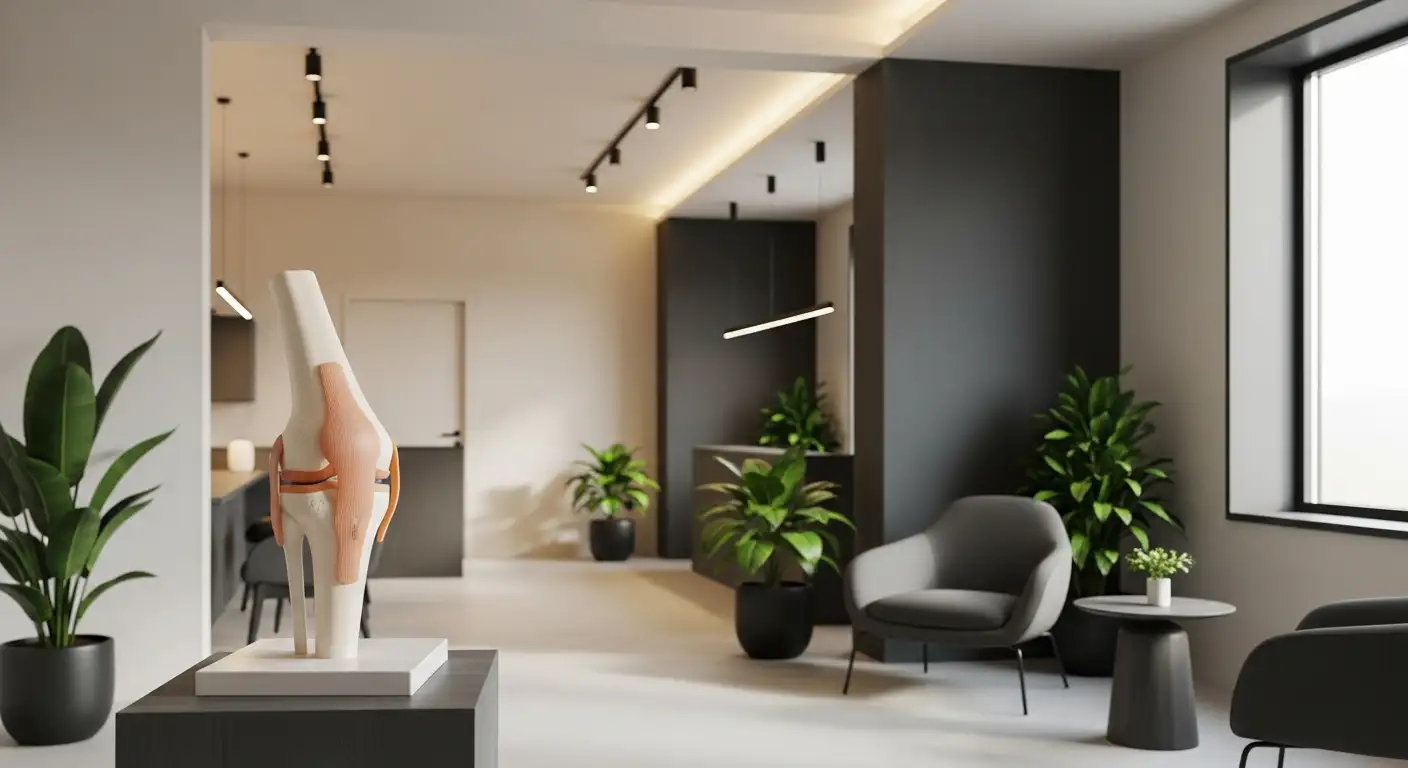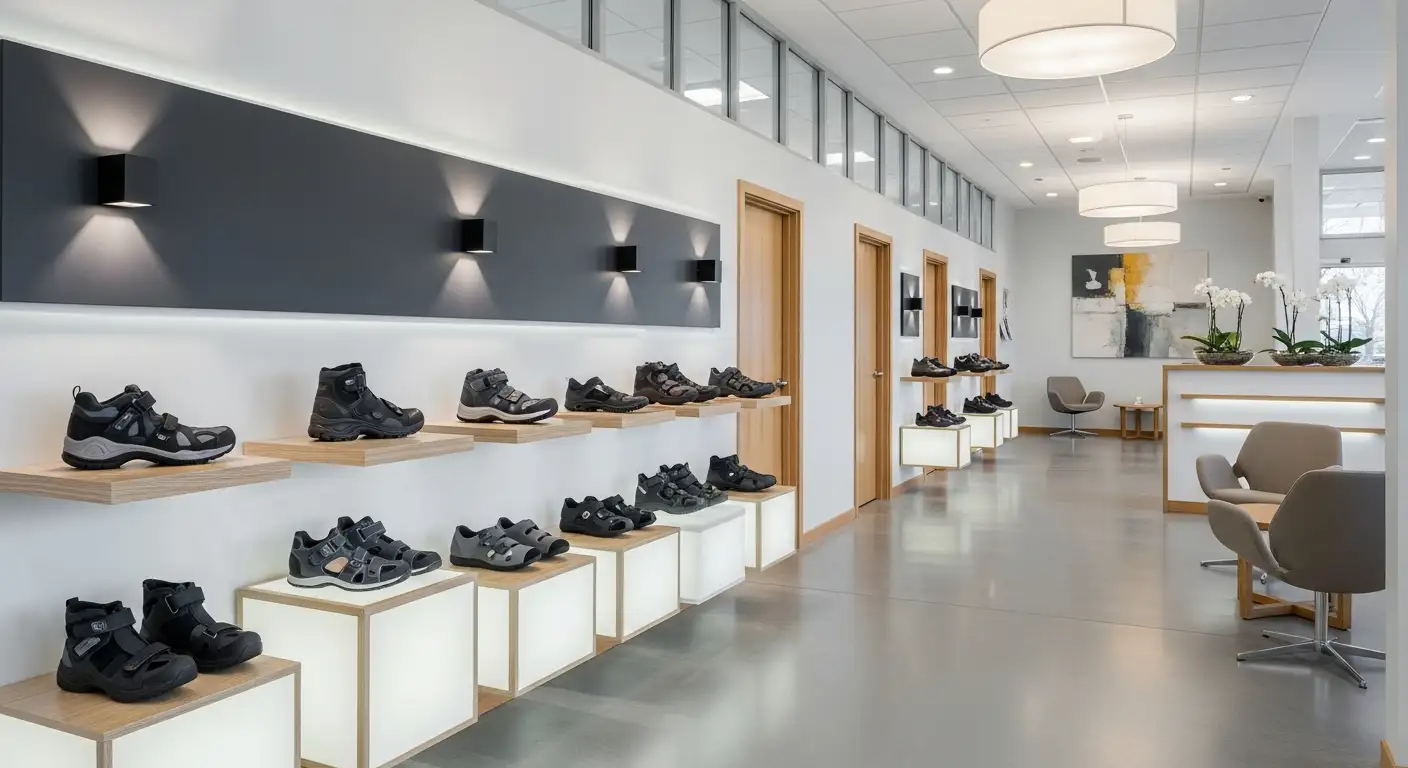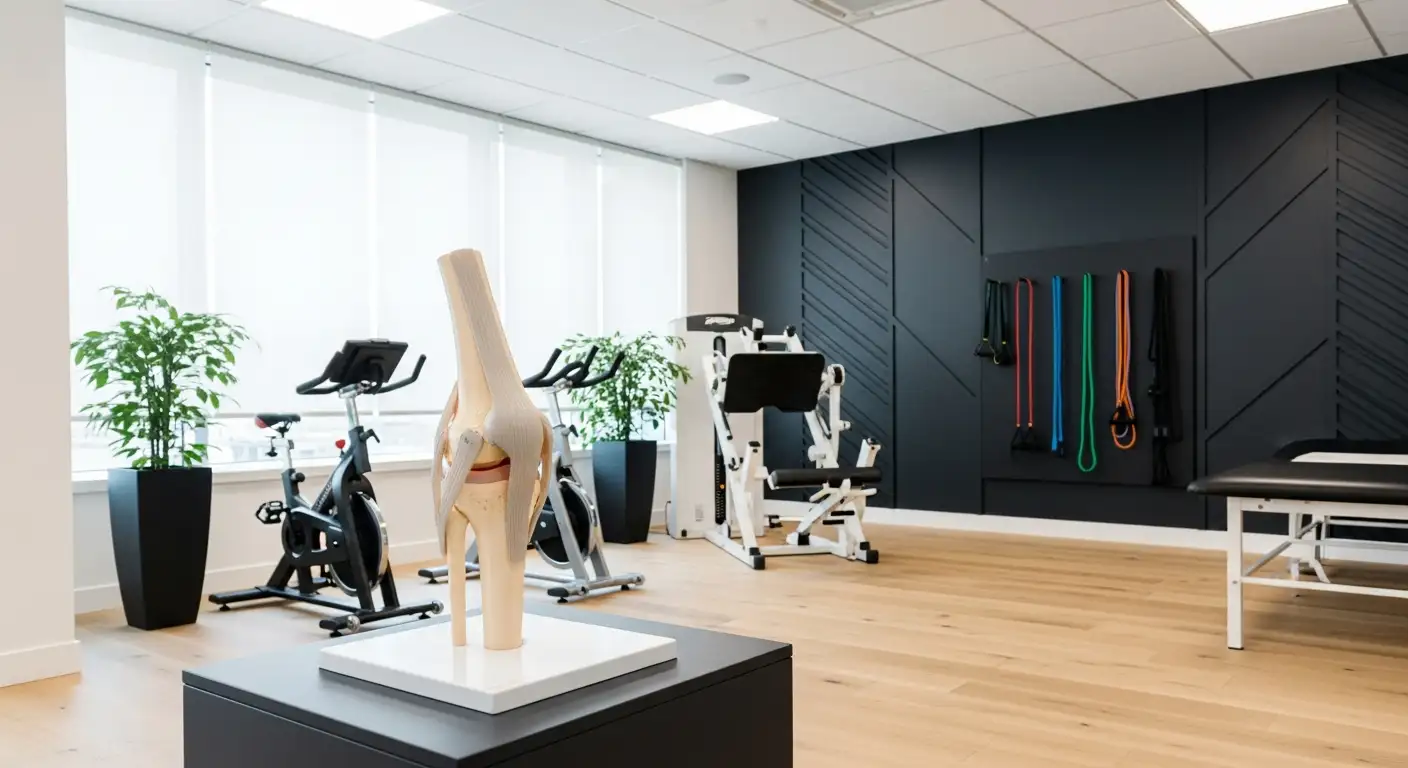Understanding Knee Clicking
Knee clicking, especially when accompanied by pain, can be a cause of concern for many. To understand the phenomenon better, let's delve into the reasons behind knee clicking and the science that explains it.
Reasons for Knee Clicking
The 'clicking' or 'popping' noise in your knee joint is a common occurrence and can be attributed to a variety of reasons. The clicking can occur between the tibia (shin bone) and femur (thigh bone) at the tibiofemoral joint or between the patella (kneecap) and the femur at the patellofemoral joint. This noise is due to the collapse of tiny gas bubbles in the joint fluid.

Clicking on the outside of the knee is often associated with the iliotibial band (ITB) flicking over the lateral condyle of the femur. When this occurrence is painful, it might be referred to as Runner’s knee or iliotibial band syndrome.
However, if the clicking in the knee is not painful, it is generally not a cause for concern. Joints can make a variety of noises, including popping, snapping, and cracking [1].
The Science Behind Knee Clicking
Scientists first studied the 'clicking' or 'popping' noise in joints in 1947. A real-time medical imaging study in 2015 revealed that the noise is a result of tiny air bubbles (primarily nitrogen) accumulating within the fluid inside joints. These bubbles collapse due to changes in pressure when you move, resulting in the noise when the gas bubbles burst, a phenomenon known as cavitation.
The mechanism behind this phenomenon is comparable to 'clicking your knuckles.' The gas bubbles reform in approximately 20 minutes after the collapse.
Understanding the reasons and science behind knee clicking can help alleviate concerns or guide you in seeking appropriate medical attention when necessary. As with any medical condition, it's crucial to consult with a healthcare professional if symptoms persist or cause distress.
Painful Knee Clicking
While knee clicking or popping without pain is usually harmless, the sensation can become concerning when it's associated with pain. This painful knee clicking, particularly when straightening the leg, may indicate an underlying issue that needs medical attention.
Causes of Painful Knee Clicking
Several causes can lead to the knee clicking when straightening the leg, accompanied by sharp pain:
- Patellar Tracking Disorder: This condition occurs when the kneecap doesn't move correctly on the groove of the thigh bone, causing pain and discomfort.
- Iliotibial (IT) Band Syndrome: The IT band snapping over the outer edge of the thighbone can lead to friction and irritation, resulting in pain on the outside of the knee.
- Meniscus or Anterior Cruciate Ligament (ACL) Injury: Injuries to the meniscus or ACL can cause knee clicking when straightening the leg, with or without pain.
- Patellofemoral Pain Syndrome: This syndrome, also known as runner's knee, can cause clicking sensations in the knee, especially during movements like leg straightening.
- Loose Body or Cartilage Damage: Loose pieces of bone or cartilage within the knee joint can also lead to knee clicking when straightening the leg [4].
Diagnosing Painful Knee Clicking
Diagnosing the cause of painful knee clicking often involves a physical examination and a detailed medical history. If these are not sufficient to identify the cause, other diagnostic tools such as X-rays, MRI scans, or ultrasounds might be used.
In severe cases of knee clicking and pain when straightening the leg, surgical interventions such as arthroscopy, meniscus repair, or realignment procedures may be necessary to address the underlying issues and alleviate symptoms.
If you're experiencing knee clicking when straightening your leg with sharp pain, it's crucial to seek medical help. Early diagnosis and treatment can prevent further damage and help maintain overall knee health.
Knee Clicking and Exercise
Exercise plays a crucial role in maintaining knee health. Specifically, it can assist in managing issues like knee clicking when straightening the leg and associated pain.
Exercise Benefits for Knee Health
Strengthening the muscles that support the knees, such as the quadriceps, hamstrings, outer hip muscles, and calf muscles, can help reduce knee pain, including clicking when straightening the leg. Moreover, enhancing areas such as the core and gluteal muscles can help prevent knee injuries and pain, as all muscles in the body are interconnected.
Activities that can help strengthen the knees and reduce pain include:
- Leg lifts
- Hamstring curls
- Calf raises
- Wall sits
- Squats
- Lunges
These exercises, when performed correctly, can significantly enhance knee health and mitigate symptoms like knee clicking and pain [6].
Safeguarding Knee Health during Exercise
While exercise is beneficial for knee health, it's essential to approach it gradually, ensuring proper form and technique to avoid exacerbating the pain or causing further damage. Overdoing it or performing exercises incorrectly can lead to additional injuries.
Individuals with knee pain should consult with a healthcare provider or physical therapist before starting any new exercise program. This is to ensure that the exercise regimen is safe and beneficial for their specific condition.
Maintaining a regular exercise routine that focuses on strengthening the muscles around the knee and enhancing overall body strength can help manage and prevent knee clicking when straightening the leg and associated pain. However, it's also important to listen to your body and avoid exercises that cause pain. With the right approach and guidance, exercise can be a powerful tool in maintaining knee health.
Knee Clicking and Muscle Imbalance
Understanding the relationship between muscle imbalances and knee clicking can provide valuable insight into the management of knee clicking when straightening leg pain.
Impact of Muscle Imbalance
Muscle imbalance, where one muscle group is stronger or more overworked than another, can play a key role in causing knee pain. In athletes, such as runners, it can also be caused by improper form leading to different types of pains or muscle compensations [7].
For instance, sitting for extended periods, especially during the pandemic, may lead to tight hamstrings. This can limit muscle potential and potentially cause knee pain. It's also worth noting that symptoms like knee clicking, popping, or knee buckling should not be ignored and warrant further medical attention if experienced alongside sudden or sharp knee pain without strenuous activity or when conservative methods are ineffective.
Addressing Muscle Imbalance
Addressing muscular imbalances related to knee pain primarily involves improving strength and flexibility. Stretching can be an effective way to achieve this. Strengthening areas such as the core and gluteal muscles can also help prevent knee injuries and pain since all muscles in the body are interconnected. Including exercises to enhance the strength of these areas, therefore, is beneficial for overall knee health [7].
However, it's crucial to note that knee clicking and pain when straightening the leg can be caused by a variety of factors such as patellofemoral syndrome, meniscus tears, or arthritis. Therefore, it's essential to consult a healthcare provider for an accurate diagnosis and appropriate treatment.
In conclusion, by understanding the impact of muscle imbalances and taking steps to address them, individuals can potentially alleviate symptoms of knee clicking when straightening leg pain and improve their overall knee health.
Treating Knee Clicking
Treatment for knee clicking when straightening the leg and related pain can be both non-surgical and surgical, depending on the severity of the condition. A comprehensive treatment plan often includes physical therapy, activity modification, weight management, and proper warm-up routines, promoting recovery and preventing future issues [5].
Non-Surgical Treatment Options
Non-surgical treatments form the first line of approach towards dealing with knee clicking when straightening the leg. This may include a variety of methods such as:
- Rest, Ice, Compression, Elevation (RICE protocol): This approach helps reduce pain and inflammation in the knee joint.
- Physical Therapy: Physical therapists can guide individuals through specific exercises designed to strengthen the knee and surrounding muscles, improving flexibility and reducing pain.
- Strengthening Exercises: Exercises aimed at strengthening the quadriceps and hamstring muscles can help stabilize the knee joint, reducing clicking and pain.
- Activity Modification: Modifying or avoiding activities that cause knee pain and clicking can help prevent further damage to the knee joint.
- Weight Management: Maintaining a healthy weight can reduce stress on the knee joint, alleviating symptoms of knee clicking and pain.
- Orthotics: In some cases, specialized shoe inserts or braces may be recommended to support the knee and improve alignment, reducing symptoms of knee clicking [2].
Surgical Interventions for Knee Clicking
In severe cases, surgical interventions may be recommended to alleviate symptoms and address the underlying causes of knee clicking when straightening the leg. These may include:
- Arthroscopy: This minimally invasive procedure involves a small camera being inserted into the knee joint to identify and repair any damage.
- Meniscus Repair: If a torn meniscus is causing knee clicking and pain, surgery may be necessary to repair the damaged tissue.
- Realignment Procedures: If knee clicking is due to misalignment of the knee joint, surgery may be performed to correct the alignment and alleviate symptoms.
These procedures can be quite effective but are usually considered as a last resort when non-surgical treatments fail to provide relief.
It's crucial to consult with a healthcare provider or physical therapist for a proper diagnosis and treatment plan if you experience knee clicking and pain when straightening your leg.
Prevention of Knee Clicking
Preventing knee clicking when straightening the leg, especially when it is accompanied by pain, requires preemptive action and lifestyle changes. This includes understanding the importance of early diagnosis and making lifestyle adjustments.
Importance of Early Diagnosis
Early diagnosis is crucial when experiencing knee clicking when straightening the leg, particularly if accompanied by sharp pain. Knee clicking may sometimes resolve on its own with rest, ice, compression, and elevation (RICE), but persistent clicking or clicking paired with pain should not be ignored. It's essential to consult a healthcare professional to prevent further damage or complications.
Early detection of underlying conditions causing the knee clicking can pave the way for timely, effective treatments and prevent the situation from worsening. Ignoring the symptoms can lead to longer recovery periods and even potential long-term damage. Hence, listening to your body, avoiding activities that worsen the clicking or pain, and seeking appropriate medical advice are crucial steps in managing and resolving this condition.
Lifestyle Changes to Prevent Knee Clicking
Preventing knee clicking and pain when straightening the leg involves various lifestyle changes that promote knee health.
- Exercise: Individuals with knee pain should consult with a healthcare provider or physical therapist before starting any new exercise program to ensure it is safe and beneficial for their specific condition. Strengthening areas such as the core and gluteal muscles can enhance knee health, as all muscles in the body are interconnected [7].
- Weight Management: Maintaining a healthy weight can reduce the strain on the knees and help prevent knee pain and clicking.
- Physical Therapy: This can be a crucial part of recovery and prevention. It helps strengthen the muscles around the knee and improve flexibility, thereby reducing the chances of future knee clicking.
- Proper Warm-ups: Starting any physical activity with a proper warm-up routine can prepare the muscles and joints for the activity, reducing the risk of knee clicking and pain.
- Activity Modification: Avoiding activities that trigger knee clicking and pain or modifying the way these activities are performed can help manage and prevent these symptoms.
Through early diagnosis and proper lifestyle changes, you can effectively manage and prevent knee clicking when straightening the leg, enhancing your overall knee health and quality of life.
References
[1]: https://complete-physio.co.uk/why-do-your-knees-click-and-should-you-worry/
[2]: https://intermountainhealthcare.org/medical-specialties/orthopedics-sports-medicine/conditions/patellar-tracking-disorder/
[3]: https://www.healthline.com/health/knee-pain-outside
[4]: https://prohealthclinic.co.uk/blog/knee-clicking/
[5]: https://phoenixrehabgroup.com/articles/knee-pain-treatment/knee-pain-when-straighten/
[6]: https://www.healthline.com/health/exercises-for-knee-pain
[7]: https://www.hss.edu/article_stretches-exercises-knee-pain.asp
[8]: https://whatcompt.com/what-is-the-cause-of-your-knee-clicking-when-straightening-your-leg/




